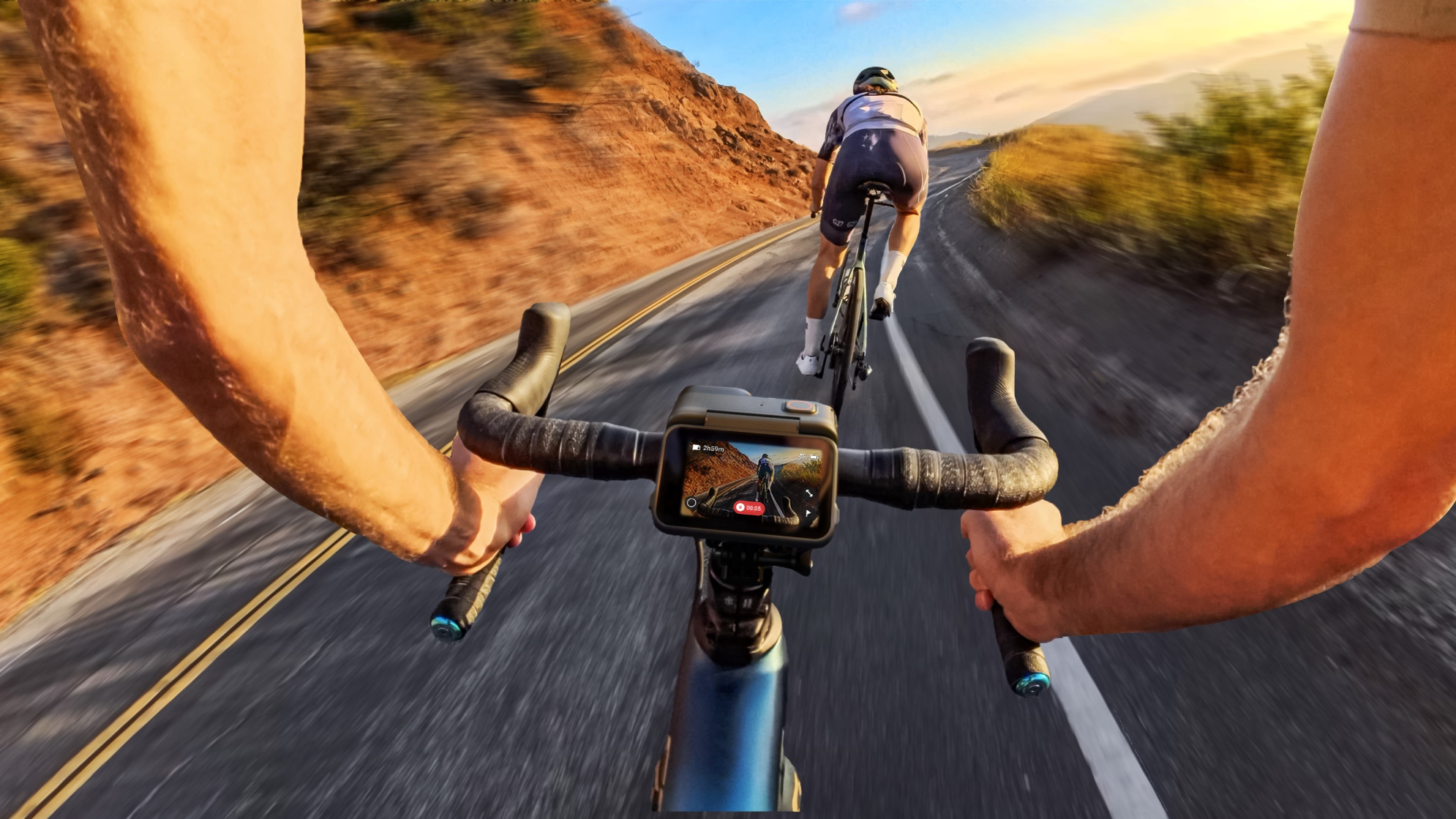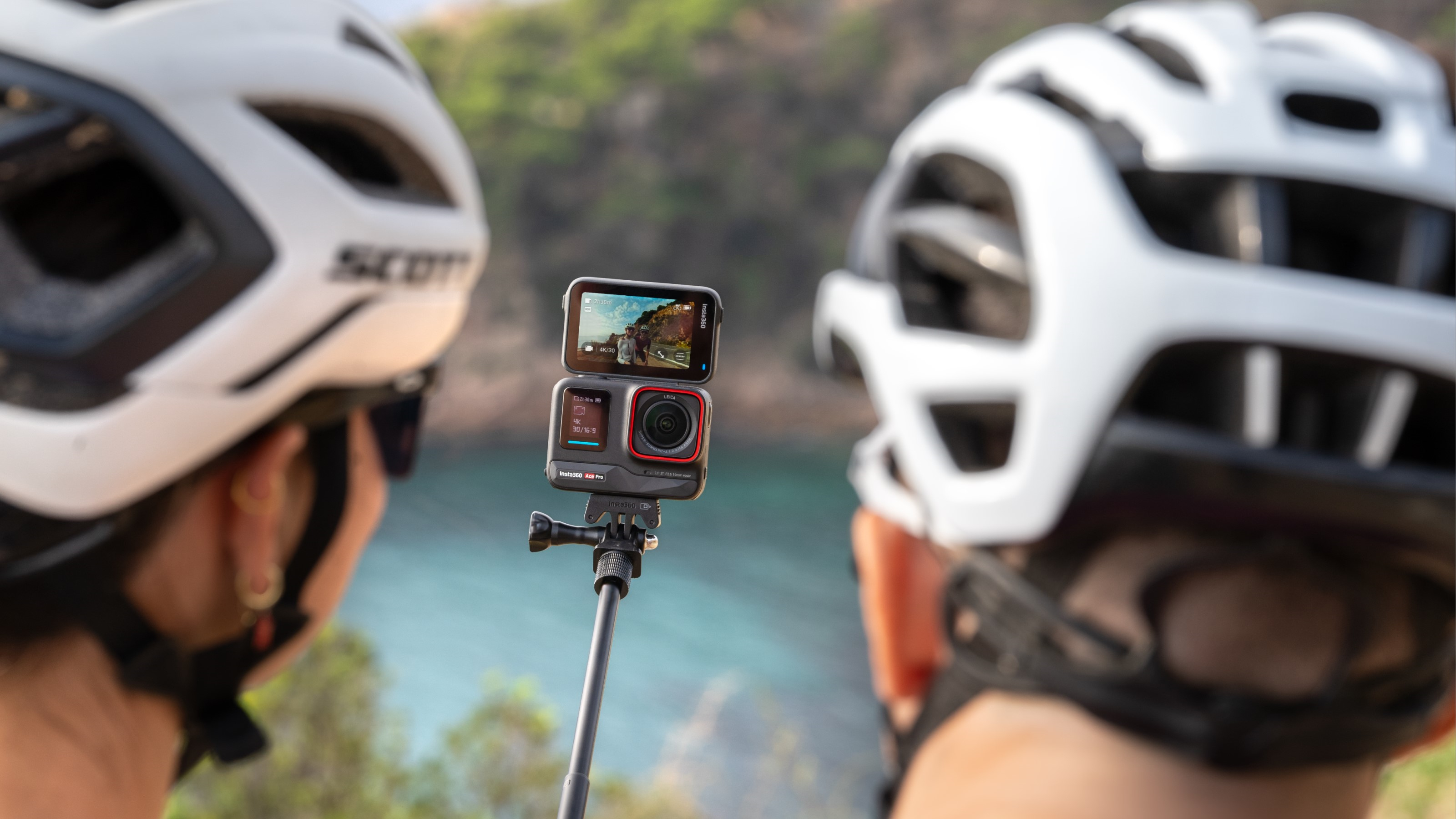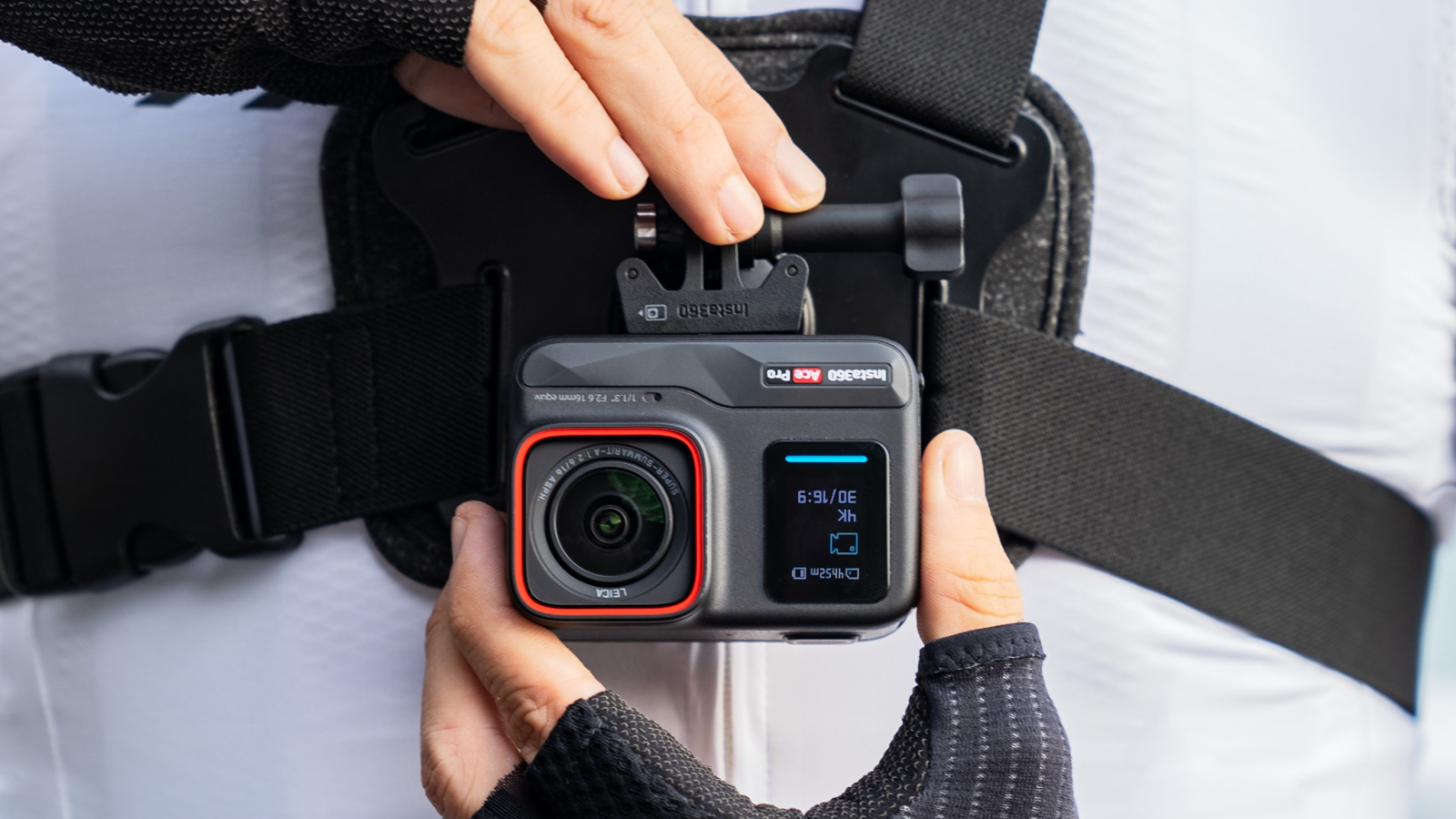Insta360 says the new Ace action camera can automatically edit your latest adventures into an epic video
The Insta360 Ace and Ace Pro boast new AI editing technology, a 2.4in flip touchscreen, and improved low-light performance

Insta360 has launched two new POV action cameras which have a host of new features including AI editing features that help organize and edit clips. The Ace range features the new flagship Ace Pro which has a 1/1.3in sensor, 5nm AI chip, Leica SUMMARIT lens, and fast charging. There is also a budget-friendly Ace option, with the key differences being a smaller 1/2" 48MP sensor, regular lens, and standard charging.
Insta360 is best known for its 360-degree action cameras, like the Insta360 X3, and its cameras often have unusual designs and features. The new Ace and the Ace Pro are closer to a traditional action camera though, unlike the modular design of the Insta360 One RS. They feature a 16mm lens and an info screen on the front, with a larger touchscreen on the rear. The 2.4in rear screen also flips out making framing easier when vlogging, taking selfies, hard-to-capture angles, and various action scenarios for optimal preview.

A stand-out feature that is going to immediately appeal to mountain bikers is the improved image quality in both low light and high dynamic range (scenes with both very bright and very dark elements) shots. Insta360 says that both cameras are better at shooting in low light, particularly the Ace Pro as it has a larger sensor to capture more light.
The dedicated PureVideo shooting mode for low light and denoises up to 4K footage for a clearer image in real-time. There is also an Active HDR mode which is said to capture more details in the highlights and shadows and more vibrant footage. While Active HDR mode is featured in both Ace cameras, the Active HDR mode is built into the Ace Pro's standard video mode.
The Ace series still uses Insta360's Flowstate stabilization, which is said to now work better due thanks to the Ace's low light performance, and 360-degree Horizon Lock. You get Insta360's other shooting features such as Timelapse, Hyperlapse, and AI Selfie Stick Eraser.
Insta360 appears to be putting a lot of focus on streamlining the video-making process and the Ace series includes several new AI features to help do this. The AI Highlights Assistant is said to be able to detect peak moments in a video to offer 'clip highlights' for in-camera review. If you don't want to fire up your video editing software, the AI Highlights Assistant is supposedly able to edit your latest clips into a video and push it directly to your phone or mobile device via the Insta360 app.

There are some other neat features that Insta360 has added to help make video creation fuss-free. Things like gesture control allow you to control the camera with hand signals for noisy situations where voice control won't work. You can pause and resume recording and also cancel the recording and instantly delete a clip to save memory card space and make file management easier. You can even connect your camera with your Garmin device or Apple Watch, allowing you to overlay your videos with GPS, speed, and other data.
Both Ace cameras use external microSD cards and can support cards up to a whopping 1TB. If you are shooting in the full quality you will need that though, The Ace Pro is capable of recording 8K footage, while the standard Ace tops out at 6K. Battery life is quoted at 100 minutes in a laboratory environment at 25°C with AI Highlights Assistant off, recording 4K@30fps Active HDR video. So expect battery life may vary in actual real-life use. The Ace Pro features fast charging, so if you do run out of battery, it only takes 46 minutes (30W fast charging adapter) or 63min (5V/3A) to charge it back up.
The new cameras are available now, with the Insta360 Ace retailing for $379.99, while the flagship option, Insta360 Ace Pro priced at $449.99. For full specs, head over to Insta360.com

Graham Cottingham joined the BikePerfect team as our senior tech writer in 2020. With over 20 years of riding experience, he has dabbled in downhill, enduro, and gravel racing. Not afraid of a challenge, Graham has embraced bikepacking over the last few years and likes nothing more than strapping some bags to his bike and covering big miles to explore Scotland's wildernesses. When he isn’t shredding the gnar in the Tweed Valley, sleeping in bushes, or tinkering with bikes, he is writing tech reviews for BikePerfect.
Rides: Cotic SolarisMax, Stooge MK4, 24 Bicycles Le Toy 3, Surly Steamroller
Height: 177cm
Weight: 71kg
